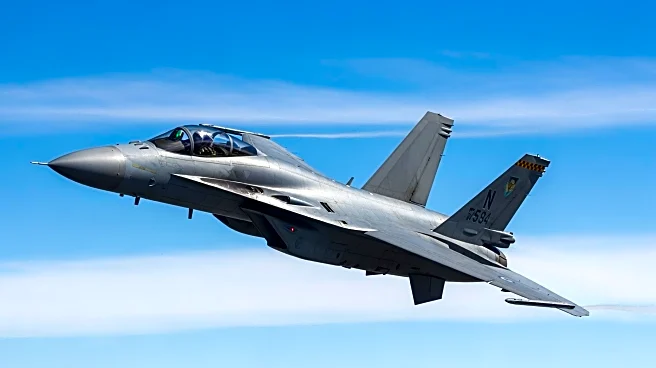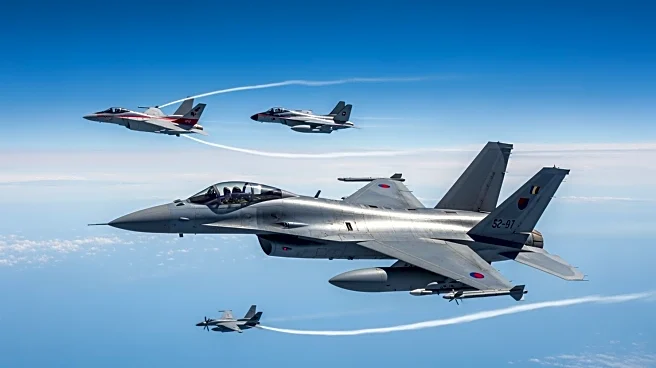What's Happening?
General Dan Caine, the United States Chairman of the Joint Chiefs of Staff, recently participated in a joint flight with his South Korean counterpart, General Jin Yong-sung, to showcase allied air power
to North Korea. This event marked the first joint flight of its kind in the 72-year history of the U.S.-South Korea alliance. The flight, which took place following the 50th Military Committee Meeting in Seoul, involved U.S. F-16 and South Korean KF-16 fighter jets. The demonstration aimed to highlight the strength and readiness of the alliance in response to North Korea's advancing nuclear and missile capabilities. The U.S. has committed to supporting South Korea with its full range of military capabilities, including nuclear forces, as part of extended deterrence.
Why It's Important?
The demonstration of air power underscores the ongoing commitment of the U.S. to its alliance with South Korea, particularly in the face of North Korea's growing military threats. With approximately 28,500 U.S. troops stationed in South Korea, the alliance plays a crucial role in maintaining regional stability. The U.S. is enhancing its military presence by upgrading fighter jets and establishing drone squadrons for intelligence and surveillance. This move is significant as it not only reassures South Korea of U.S. support but also serves as a deterrent to North Korea and other regional threats. The alliance's strength is pivotal in ensuring peace and security in the Indo-Pacific region.
What's Next?
The future adjustments to U.S. Forces Korea's missions remain to be seen, as they may be tailored to address threats beyond the Korean Peninsula. U.S. Defense Secretary Pete Hegseth has suggested that U.S. forces in South Korea could be utilized for regional contingencies, reflecting a strategic shift to address broader security challenges. The ongoing collaboration between the U.S. and South Korea is expected to continue, with both nations reaffirming their commitment to a free and open Indo-Pacific.
Beyond the Headlines
The joint flight not only demonstrates military strength but also highlights the deep-rooted alliance between the U.S. and South Korea. This partnership is not just about military cooperation but also involves diplomatic and economic ties that contribute to regional stability. The alliance's ability to adapt to evolving threats is crucial in maintaining a balance of power in the region, particularly with North Korea's military advancements and its support from Russia.












